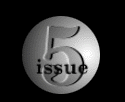





| ||
movie review by Gary Johnson [click on photos Official Web site for FAIRYTALE |
Do you believe in fairies?
Well, the filmmakers of Fairytale--A True Story certainly want for us to believe. Most movies about the fantastic, especially movies with children as main characters, push us head first over the boundary between the real world and the fantastic. However, Fairytale--A True Story attempts to maintain a tricky balance between the real and the fantastic. In the hands of Disney, for example, you could have expected to see the fairies as rollicking little tricksters, singing songs and playing pranks. We would've been introduced to all the fairies individually, and we would've learned all their names. (All the better for the marketing efforts afterwards. How can you sell millions of little fairy dolls unless you give each doll a different name and thus give the collectors a reason to collect entire sets of the critters?) But Fairytale--A True Story keeps us at arm's length from the fairies. They remain mysterious, but yet we do in fact see them--but usually only in fleeting glimpses. This approach to the subject is one of the marvels of the movie. It pulls us into a world of hidden magic that can only be seen if we truly believe that it exists. Unfortunately, this approach will frustrate many people in the audience: Fairytale just suggests that the world of fairies exists without ever really exploring it. The world of the fairies is always elusive and inexplicable. But that is exactly what makes this movie so much fun, and ultimately such a magical and poignant experience.
Fairytale--A True Story is loosely based upon true events which took place between 1917 and 1921 in West Yorkshire, England: Two young girls, Elsie (Florence Hoath) and her cousin Frances (Elizabeth Earl), take a camera into the family garden--a wondrous, vibrantly-green glen of moss, ferns, brooks, and toadstools--and emerge with photographs that no one can explain. The girls claim the pictures show fairies. But how can that be? Fairies are strictly a figment of the imagination, right? Elsie's father (Paul McGann) develops the pictures and shakes his head in disbelief. But Elsie's mother (Phoebe Nicholls), still mourning the loss of her son, wonders if the photographs might indeed be real. She takes the photos to the leader of an occult society, and after he passes the photos along, Sir Arthur Conan Doyle (Peter O'Toole) comes knocking on the Wright family's front door--with Harry Houdini (Harvey Keitel) in tow.
Significantly, we never actually see the girls taking the photographs: many years later, Elsie and Frances admitted that they had faked the photographs with cardboard cutouts supported by hat pins. But the girls always maintained that they had indeed seen real fairies in the garden. (Frances also insisted until her death that one of the photos wasn't faked.) The screenplay (by Ernie Contreras) takes pains to set up a situation where the lead characters might be susceptible to believing in unreal events. As previously mentioned, the death of the Wright's son (which took place about a year before the movie actually starts) practically tore the family apart. The mother and Elsie feel a tremendous sense of loss: for Elsie, her brother was her main playmate and they spent many hours together in the garden, creating their own world of make-believe with tiny tea sets and doll houses that they constructed out of twigs, moss, and rocks; for Mrs. Wright, the untimely death of her son has left her in an habitual state of melancholia and depression; for Frances, her father has recently been reported as missing in a war. All these characters have reasons for wanting to believe that there is more to life than a material plane of existence. In addition, Sir Arthur Conan Doyle has lost his son in a war, and he has been visiting psychic mediums in an effort to talk to his son again. Because all the characters are wounded in one way or another, the perceptions of all the main characters are somewhat suspect. Harry Houdini is the only main character free of these psychic wounds. He is against people who use fraud to profit from the misery of others, as in the case of psychic mediums who promise the ability to conjure the dead; however, in the case of the girls and their photographs of fairies, he says, "I don't see that here; I see only joy."
Even though the filmmakers have set up a situation where the perceptions of the lead characters might be questioned, director Charles Sturridge's camera clearly shows us fairies--indicating that the same conditions that might make us question someone's perceptions are the same conditions that allow them to see what others cannot. And when Sturridge does show us the fairies, they appear so magical that you'll want to believe that they could really exist. One of our few extended looks at a fairy takes us on a magnificent tracking shot high over the countryside as the fairy zips like a dragonfly through tree branches and down to earth. These aren't cute little Tinkerbell-like creations: the filmmakers give us creatures that move like insects.
Exactly because the filmmakers refuse to completely embrace the fantastic, Fairytale becomes all the more intriguing, and in the process, the movie's magical elements--dealt out in terms that manage simultaneously to embrace fairies while remaining skeptical--become all the more compelling. Fairytale--A True Story is a wonderful movie and one of the best movies ever made about children and the difference between an adult's conception of magic (i.e. "trickery," as embodied by Harry Houdini) and a child's conception of magic as a natural part of the world.
| |





